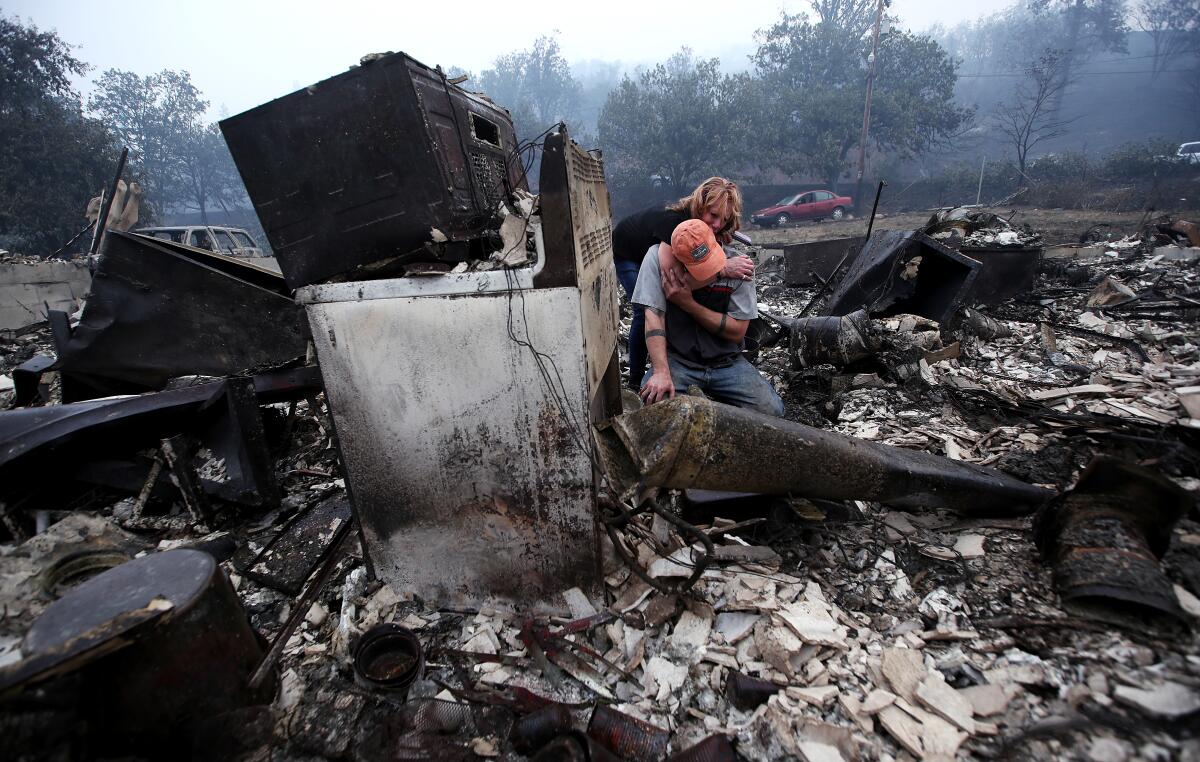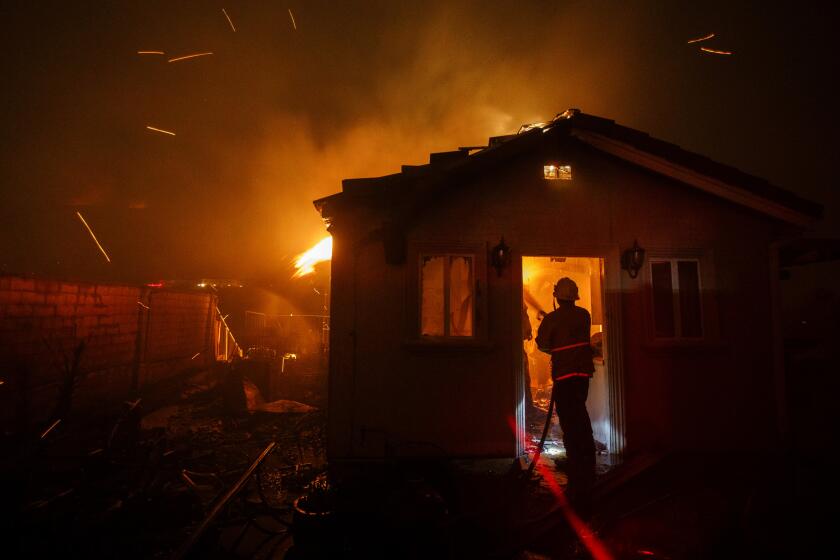California’s home insurance crisis: What went wrong, how it can be fixed and what owners can do

Climate change and extreme weather have contributed to catastrophic fires that destroyed thousands of California homes in recent years — and an insurance crisis that could result in the biggest set of regulatory changes since the passage of Proposition 103 in 1988.
Insurers have pulled back from the homeowners market, leading to a flurry of activity in Sacramento aimed at making coverage available and affordable for at-risk residents in places like the Santa Monica Mountains and Malibu. Here’s what’s going on — and some steps homeowners can take now to lessen the blow.
State Farm announced this week it will not renew 72,000 policies in California amid a tight insurance market.
How big a deal is this really?
The crisis reached new heights last week when leading insurer State Farm General announced that it wouldn’t renew 72,000 property owner policies statewide, joining Farmers, Allstate and other companies in either not writing or limiting new policies or tightening underwriting standards. The companies are blaming wildfires, inflation that raised reconstruction costs, higher prices for reinsurance they buy to boost their balance sheets and protect themselves from catastrophes, as well as outdated state regulations — claims disputed by some consumer advocates.
How is this pullback affecting homeowners?
“It’s really a tale of two states,” said Michael Soller, a spokesperson for the state Department of Insurance. If you are an owner, say, in the San Fernando Valley, you likely still have many insurance companies from which to buy a policy. But if you live in what is called the “wildland urban interface” — a hillside, canyon or other neighborhood close to nature — your options are likely limited and costly, if you can even get a policy. That has forced thousands of homeowners into the California FAIR Plan, an insurer of last resort funded by the industry that offers policies with limited coverage.
What is going on in Sacramento to resolve this?
There was an attempt last year to reach a fix in the Legislature but it fell apart, leading Insurance Commissioner Ricardo Lara to announce in September a package of executive actions called the Sustainable Insurance Strategy to reform the market by the end of this year, while getting buy-in from insurers. He got political backing for the move from Gov. Gavin Newsom, who issued an executive order asking Lara to take “prompt regulatory action,” noting how the crisis could freeze critically needed new housing development.
So how would this plan help policy holders?
The commissioner wants to speed up the review process for insurers seeking rate hikes and allow them to consider the projected costs of future catastrophes into their rates, as well as their costs for reinsurance that they can attribute to their California operations. The package also aims to move homeowners back onto the roles of commercial insurers and off the FAIR Plan, while improving the finances and coverage of the state’s insurer of last resort. “We are at a major crossroads on insurance,” said Lara, in introducing his reform package.
Will the commissioner’s reforms fly?
In February, Lara introduced draft regulations to streamline the rate approval process for insurers in the homeowners, auto and other markets, rules originally created by Proposition 103, the state’s landmark insurance reform law. Lara says the regulations were established in an “age of pagers and pay phones” and don’t precisely specify the materials and information for a timely review.
Some in Sacramento thought the reforms were straightforward, but they ran into stiff opposition from the Personal Insurance Federation of California, a lobbying group for property and casualty insurers, which claims they actually muddle the process while giving regulators too much authority. “They want to be able to say, ‘Well, if you want us to process your rate filing, you have to give us all this other stuff,’ which has nothing, nothing to do with the calculation,” said Federation President Rex Frazier.
His proposals to include so-called “catastrophe modeling” for future fires, storms and big insurance events, as well as the cost of reinsurance in premiums, are controversial among consumer advocates.
Lara has not yet released draft proposals for incorporating insurer reinsurance costs in rate reviews, nor exact proposals for getting insurers back into high wildfire-risk areas and getting homeowners off the FAIR Plan. However, insurers and the department reached a general framework last year that would require them to write no less than 85% of their statewide market share in those areas in exchange for his reforms. That means, for example, if an insurer has a 20% market share statewide, it would have to insure 17 out of 100 homes in such neighborhoods. Consumer Watchdog says both catastrophe modeling and reinsurance consideration in rate-making have worsened problems in Florida’s troubled homeowners insurance market, which has been battered by storm damage.
In the meantime, what can I do now if I live in high wildfire risk neighborhoods?
In 2022, Lara released draft regulations now in effect that require insurers to give discounts to homeowners who take steps to improve the wildfire resilience of their homes and property. They include installing a Class-A fire-rated roof, better vents, enclosed eaves and defensible spaces, among 10 specific actions that qualify for a discount. The department has already approved about 140 insurer rate applications that take the program into account.
What if I have trouble getting a rate quote?
The Insurance Department has a tool that allows homeowners to find out which insurers are writing coverage in their neighborhoods. It also will talk directly with distressed homeowners who call 800-927-4357 or access an online chat through insurance.ca.gov. The consumer group United Policyholders has worked extensively in this area and has its own online resources at uphelp.org.
More to Read
Inside the business of entertainment
The Wide Shot brings you news, analysis and insights on everything from streaming wars to production — and what it all means for the future.
You may occasionally receive promotional content from the Los Angeles Times.











